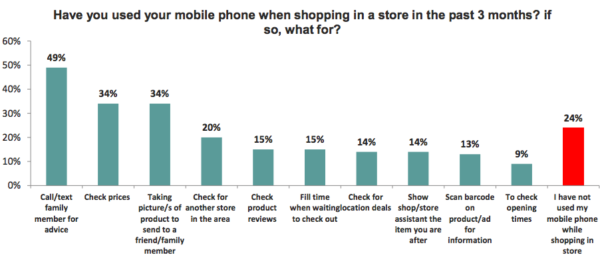The “Real Estate” of Mobile Targeting: Location. Location. Lat-Long.
The power of mobile lies in our ability to utilize the deep location-targeting technology available to focus advertising campaigns in a way no other medium has achieved before. There are a variety of location-based data signals available to the mobile industry which have shaped a diverse landscape of products and services. As in real estate, […]

There are a variety of location-based data signals available to the mobile industry which have shaped a diverse landscape of products and services.
As in real estate, there is a home amid this data for every campaign. But the task at hand is in properly educating the industry on the various data “property types” available, and their unique characteristics.
Mobile location data signals range from the more general and broad-reaching, to data so exact it can provide insights down to a city block.
Understanding where each of these data sets lies within that range is essential to the success of mobile partnership — from international ad networks, to the local mom and pop shop looking to promote their business.
While you may think your campaign is accessing the most relevant, detailed location data, the truth can shock and surprise even veteran mobile brokers.
Narrowing The Scope
For mobile campaigns looking for broad, branded reach targeted to a state, region, or nationwide, registration data can assist.
Registration signals assign location according to the address information provided on a user’s account. Which account you may ask? Registration data can come from all types of user-created accounts, from a mobile carrier to your favorite online retailer.
But because registration data typically requires a user to update their own provided address, the accuracy of registration data is often in question. Even if the most current info is made available, those who utilize it only have the ability to target based on that specific address or surrounding areas — tethering the performance of any campaign.
Mobile Data Brokers
Location data is gathered from a variety of “holders” including of course, mobile carriers.
Cell tower triangulation signals are one of those highly guarded data sources that require a healthy partnership with a mobile carrier to utilize.
Cell tower triangulation data is typically layered with GPS data to better refine the information. This is because availability of cell tower triangulation data depends on the number of towers in a given area. The more towers within a given geographic area, the better. Therefore this type of data is far more valuable when targeting for a more urban area, but fails to stand on its own in more suburban or rural regions.
The Scene Downtown
In a report published this year by the Interactive Advertising Bureau (IAB), 73% of consumers say they have used their smartphone in a store.
Stats like this reveal the perfect opportunity to utilize Wi-Fi ISP data, which works with a user’s location within a 100 foot radius of a wireless network access point.
So the free Wi-Fi access available at the local coffee shop has the ability to then power the mobile advertising served within its range — for example, a cupcake promotion at the corner bakery, or a happy hour event at the pub down the street.
It’s also possible to gather data from a cluster of nearby wi-fi networks that can better triangulate the location of a user within their range to develop an even more accurate target.
Unlike many other geo-location methods, Wi-Fi ISP is an indoor-friendly signal that is accurate to the DMA and often the neighborhood level. While it’s not the most detailed and accurate signal type, it is a viable tool for targeting more specific geographic areas.
Get To Know Your Neighbors
The most detailed location data available is lat-long, which has the ability to target the mobile user to an exact location.
Lat-long refers to longitude and latitude of course, and is often termed GPS.
First, a mobile device picks up signals from the orbiting Global Positioning System satellite network. Users then opt in to access location-specific content via their mobile device — local content that often includes maps, coupons and promotions, or even local movie listings.
With that, advertisers can then serve ads targeted at a hyper-local level, often down to a city block. Though lat-long is the most accurate location data currently available, it’s estimated that only 10-15% of smartphones are location-enabled at any given time. Therefore, added layering via cell tower triangulation, and/or Wi-Fi ISP provide the added power necessary to achieve hyper-local user targeting.
Now that we’ve cleared the air on that, identifying these mobile “property types” is just the beginning. It’s important to better understand the value available with each signal type in order to harness their individual strengths, and work around any possible weaknesses by layering any other relevant data signals or third party information.
This process is an essential first step in determining the targeting of any mobile advertiser’s campaign, and placing mobile creative for optimal performance.
Opinions expressed in this article are those of the guest author and not necessarily MarTech. Staff authors are listed here.
Related stories
